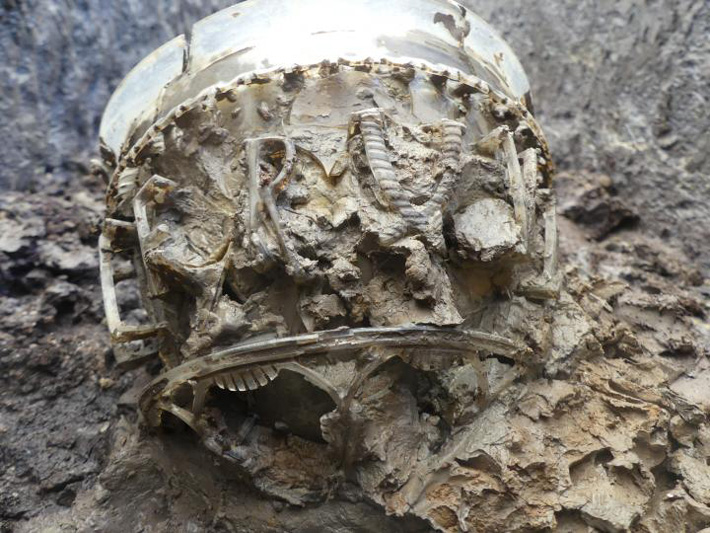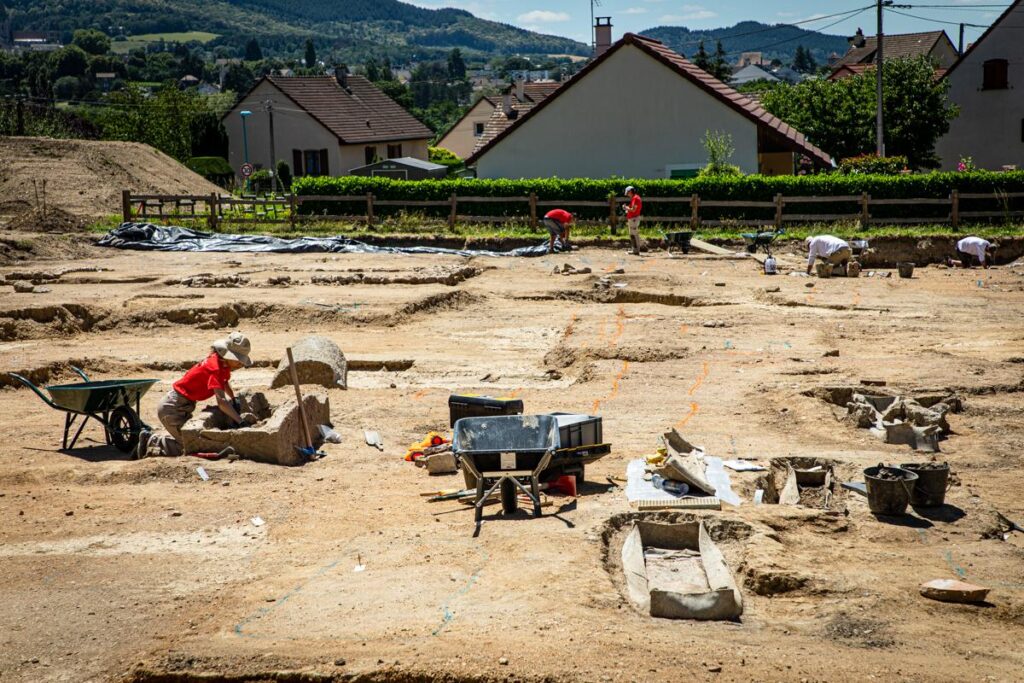Intact Roman Glass Vase Discovered in France
According to the French National Institute of Preventive Archaeological Studies, an unusual vase from the late Roman period was uncovered in central France during the excavations of an ancient cemetery.

The archaeologist Michel Kasprzyk named it the “first complete specimen found to date in Gaul,” in a virtual press conference after its discovery, referring to the Celtic tribes that populated Western Europe during the 4th century and ultimately came under Roman rule.
The artefact is a diatretic vase, which means it is made from reticulated glass. Just 10 intact diatretic vases were ever recovered, according to Kasprzyk, the last of which was discovered in North Macedonia in the 1970s.
The glass vase recovered earlier this year in the French town of Autun is the first uncovered in the ancient territories of Gaul. It measures around 4.7 inches high and 6.3 inches in diameter, and is adorned with a message in relief reading “Vivas feliciter,” or “live happily.”
Deputy excavation manager Nicolas Tisserand said during the conference that for now, the piece will be “kept away from light, under drastic security conditions, before being studied and meticulously restored.”
Per a report in Le Figaro, the excavations were carried out from June to mid-September on the Gaul necropolis near Saint-Pierre l’Estrier, one of the oldest Christian churches in Burgundy.

Around 150 plots have been unearthed at the site, and they have led to the discovery of sandstone sarcophagi and lead and wooden coffins.
An array of precious gems, furniture, and jewellery have also been uncovered, including small gold earrings likely crafted for a child.
“These exceptional and extremely rare discoveries are interesting avenues for the study of the aristocracy of Autun, precociously Christianized at the beginning of the 4th century,” said Kasprzyk.
The entire site, which includes an 11th-century basilica and monastery, has been under study by archaeologists and historians since the mid-1970s due to its rich repository of local and regional history. In 1979, the religious structure was designated a historic monument.





